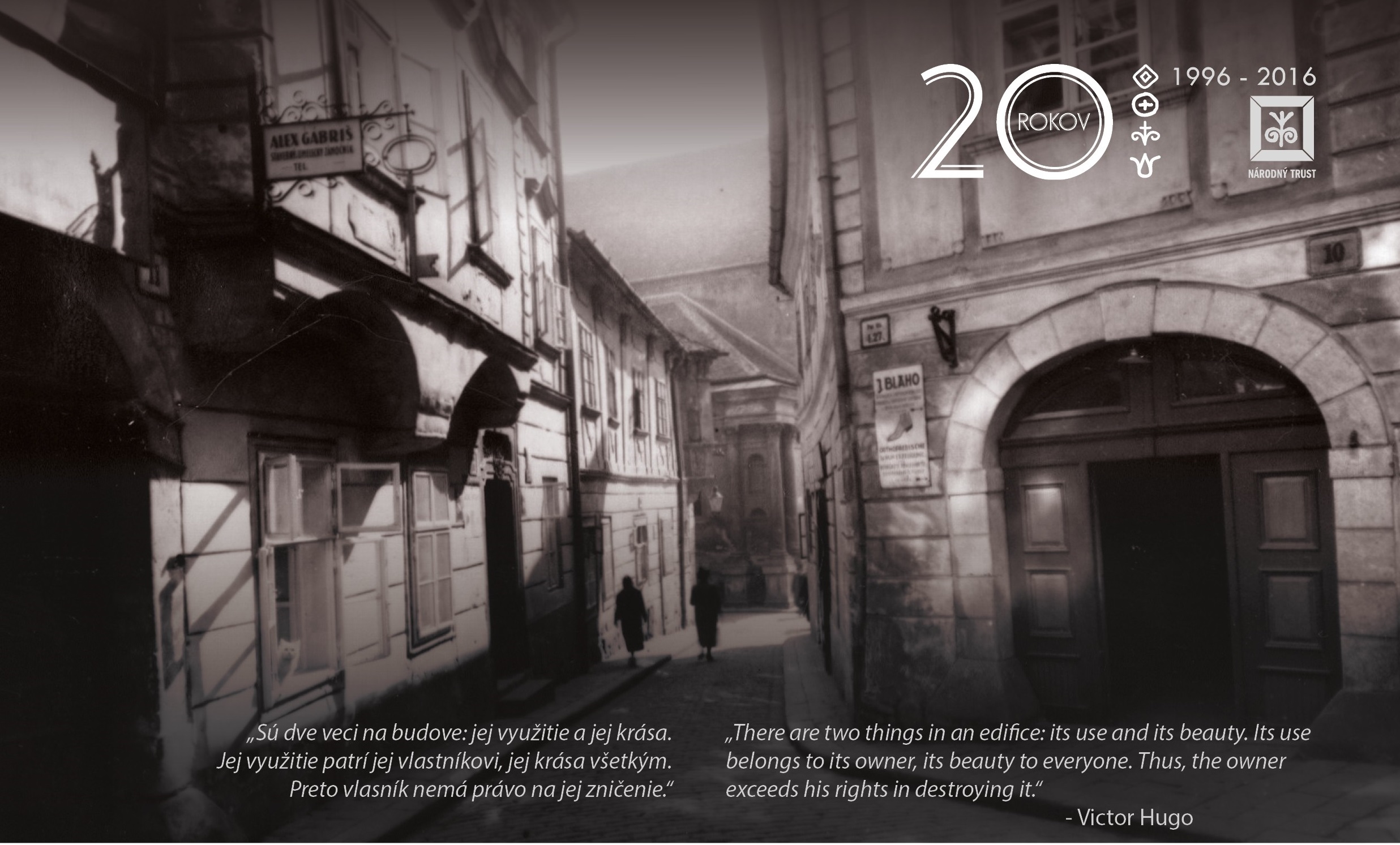-
The end of cultural pessimism: People power in Slovakia (Weekly blog, 13 November 2016)
Posted on November 13, 2016A blog by Catherine Leonard, Secretary-General
 This week, I was in Bratislava at the excellent ‘Who owns the Monuments’ Conference. Organised as part of the 20th anniversary celebrations of the National Trust of Slovakia, I was thrilled to be invited having first got to know the organization through Martin Kovac and Peter Táborský back in 1999.
This week, I was in Bratislava at the excellent ‘Who owns the Monuments’ Conference. Organised as part of the 20th anniversary celebrations of the National Trust of Slovakia, I was thrilled to be invited having first got to know the organization through Martin Kovac and Peter Táborský back in 1999.A lot has changed since then! And the National Trust of Slovakia with its focus on collaboration and partnership is playing a really important role in engaging people with their heritage, facilitating projects, developing skills and creating opportunities.
It’s sometimes tempting to think that safeguarding heritage is someone else’s job but the conference (and the visits in Banská Štiavnica the following day) definitely showed the opposite is true.
We heard of the end of ‘cultural pessimism’ and the growth of a ‘do it yourself culture’ at the conference. And we witnessed people taking the future of cultural heritage into their own hands – quite literally – in an inspiring and proactive way on the site visits.

The Rómer House, 10 Zámočnícka, Bratislava
Firstly we visited the Rómer House in Zámočnícka Street, which will become the National Trust of Slovakia’s office and cultural hub in Bratislava. An ambitious project to rehabilitate a large, mostly 18th century building in partnership with a restauranteur, an entrepreneur with a heritage restoration business, an educator wanting to accommodate visitors from Japan, amongst others.
The late Rodney Davidson, a lifelong supporter of the global National Trust movement and INTO, gave seed money to support the project back in 2012 and he would have been thrilled to see the progress made.
Because funds are tight, the Trust is taking its time and exploiting every contact, network and partnership it can to ensure that 10 Zámočnícka has numerous new uses. Much of the work is being done with small grants and donations and the gifts of time and sweat from many volunteers.
Situated in the heart of the old city the Rómer House is going to become a cultural heritage hub and café and I for one am very excited about the whole project!
The following day we went to the World Heritage Town of Banská Štiavnica. Inscribed as an outstanding example of a medieval mining centre, it is a picturesque town set in the crater of a long extinct volcano. But it wasn’t the colourfully painted rooves or the many churches that will stick in my mind. It’s Martin Macharik, a heritage-devotee who is loving the abandoned, decrepit old buildings of this historic mining town back to life.
 An inspiring and dynamic fellow, Martin told us that he had been fed up with waiting for others and decided to just get on with it in the belief that people would fall in behind him, which they did. (This sentiment was echoed by Michal Hrčka of Obnova – and at the conference by Martin Krcma of the Czech National Trust and Zuzana Ondrejková, from the Slovak Monuments Protection Department). Martin has a number of commercial ventures in old buildings in the town (restaurant, hotel, gallery) and is now restoring the twenty or so chapels on the Calvary Hill.
An inspiring and dynamic fellow, Martin told us that he had been fed up with waiting for others and decided to just get on with it in the belief that people would fall in behind him, which they did. (This sentiment was echoed by Michal Hrčka of Obnova – and at the conference by Martin Krcma of the Czech National Trust and Zuzana Ondrejková, from the Slovak Monuments Protection Department). Martin has a number of commercial ventures in old buildings in the town (restaurant, hotel, gallery) and is now restoring the twenty or so chapels on the Calvary Hill.The Calvary visitor centre was the best thing I’ve seen in a long time but perhaps my judgement was clouded by Martin’s energy, stories and enthusiasm!
We also visited the new workshop of the Obnova company which employs 25 craftsmen and is establishing a training centre in an enormous turn of the century school building, which it is in the process of restoring.
This bold and visionary project brought my uplifting stay in Slovakia to an end, but not before hearing about, although sadly not visiting because of the snow, the National Trust’s Thatched Cottage project in Bartošova Lehôtka. Another inspirational story. Having discovered that it was impossible to buy thatch in Slovakia, Michaela looked overseas to Poland (where it cost 2 euros a stook) and decided to try and grow their own. Now with the help of a willing team, they have begun to rethatch the cottage with their homegrown straw!

Banská Štiavnica by Benjamín Jarčuška via Wikimedia Commons
So, the message that really hit home? The importance of people (our most important resource, according to Michaela Kubíková, Director of the National Trust of Slovakia) and taking personal responsibility. As Martin Krcma said (rephrasing Kennedy and Gorbachev’s If not me, who? If not now, when?): “Who? Only me! When? Now or never!”
So in a final reflection from the philosopher E F Schumacher, What can I do to save the world? I am so small. Ladies and gentlemen, everything starts very very small and often in a very dark place. I don’t know about you but I am not going to give up.
Thanks for reading!

 44 (0)20 7824 7157
44 (0)20 7824 7157